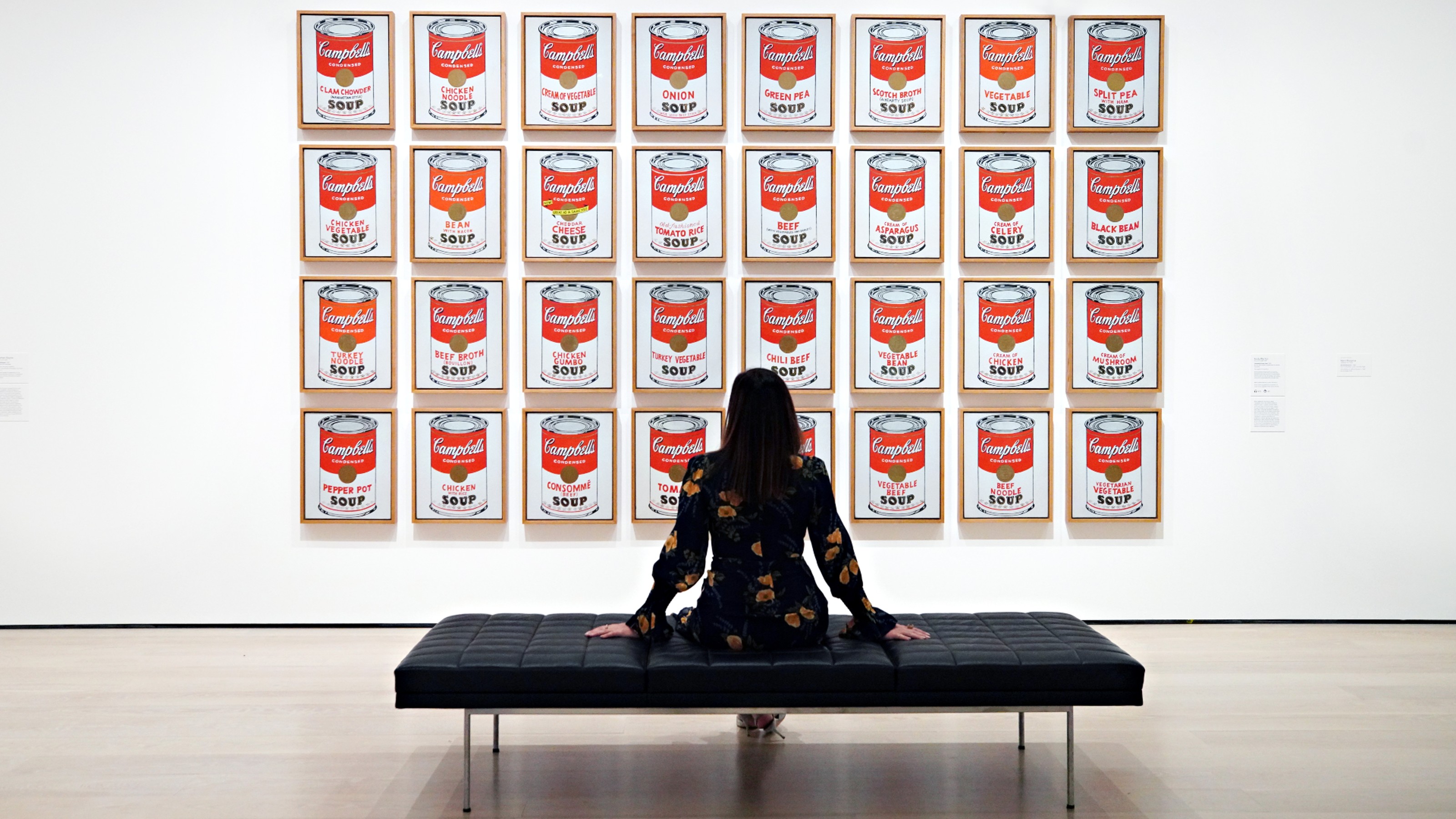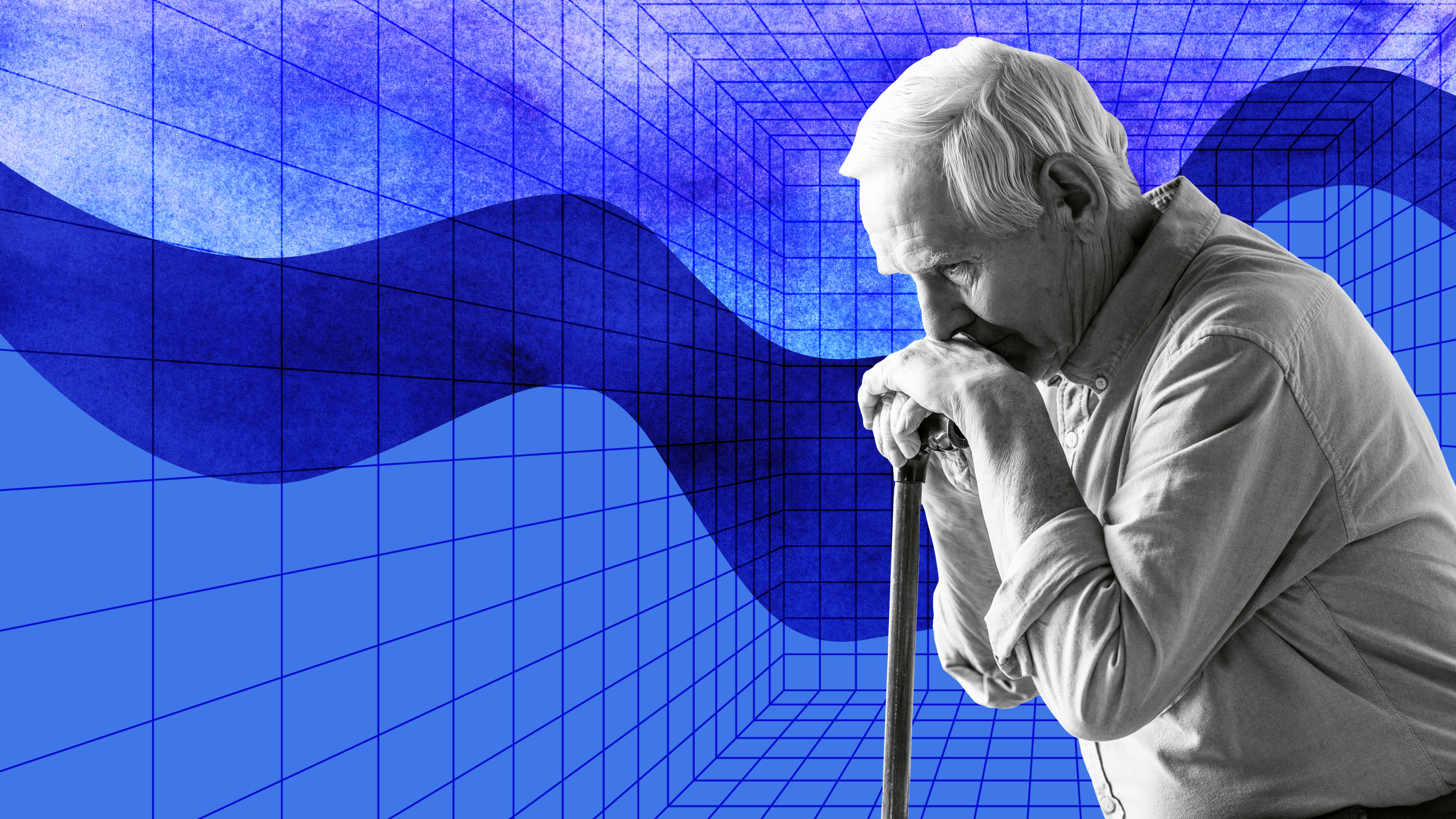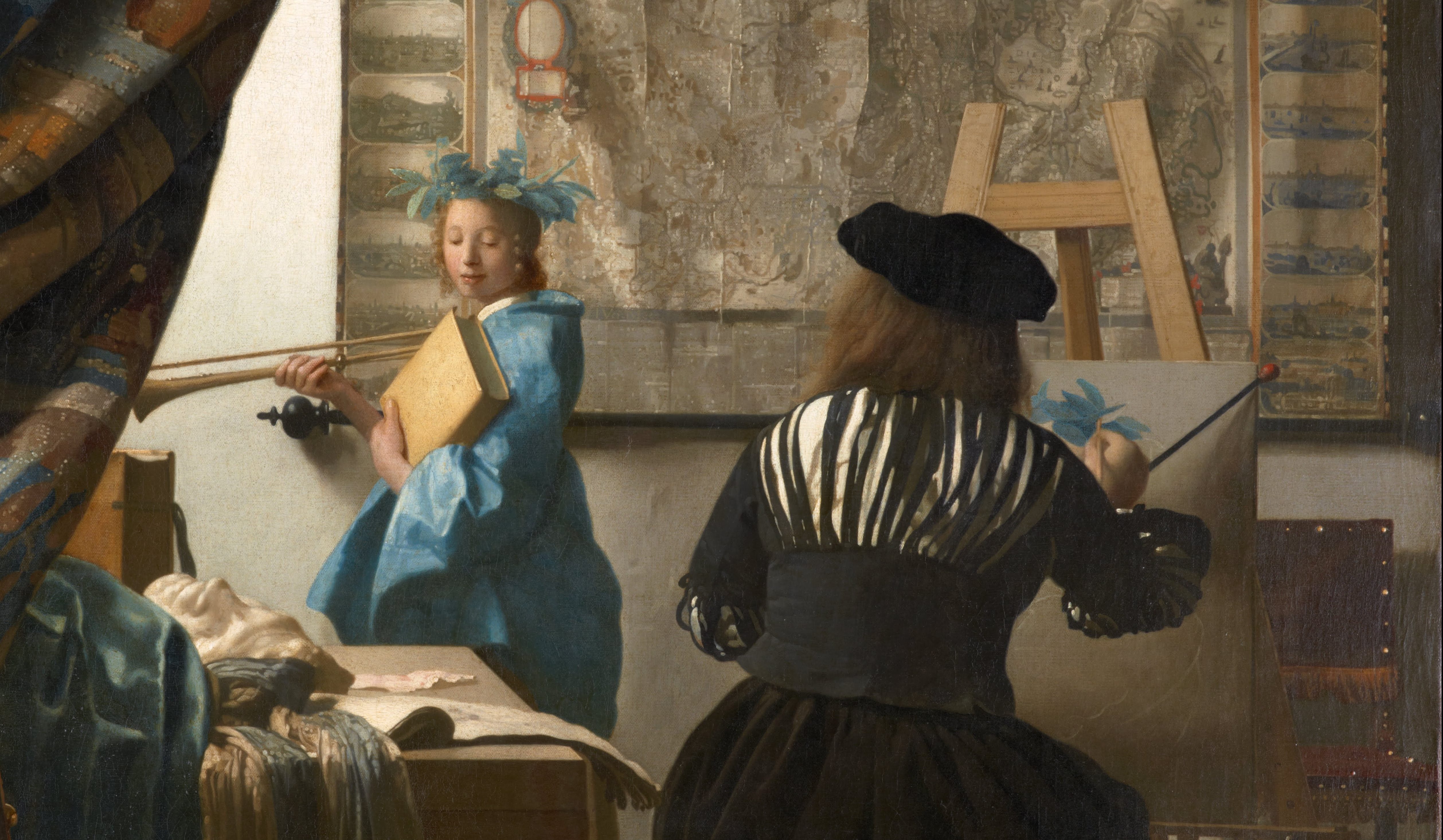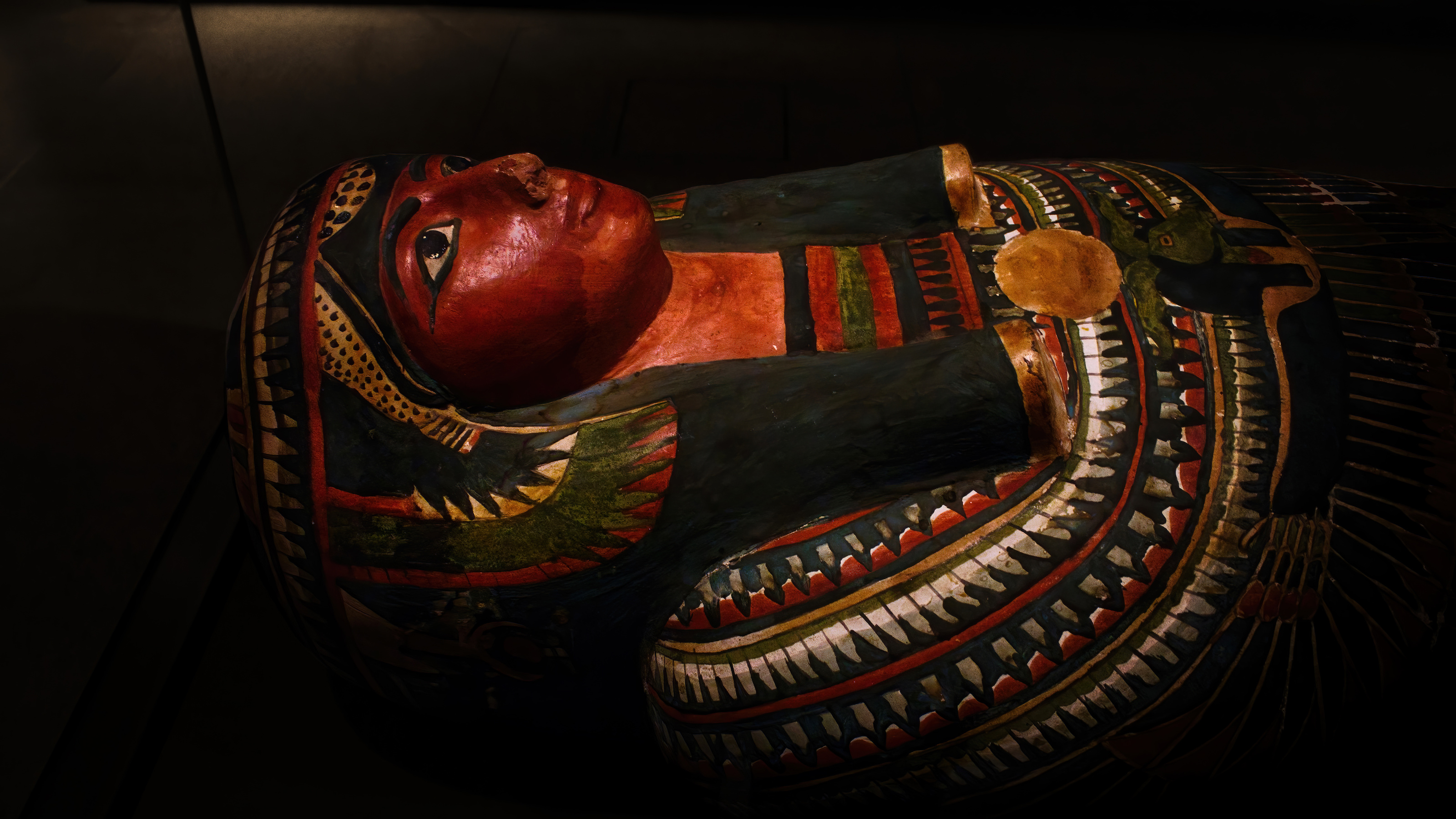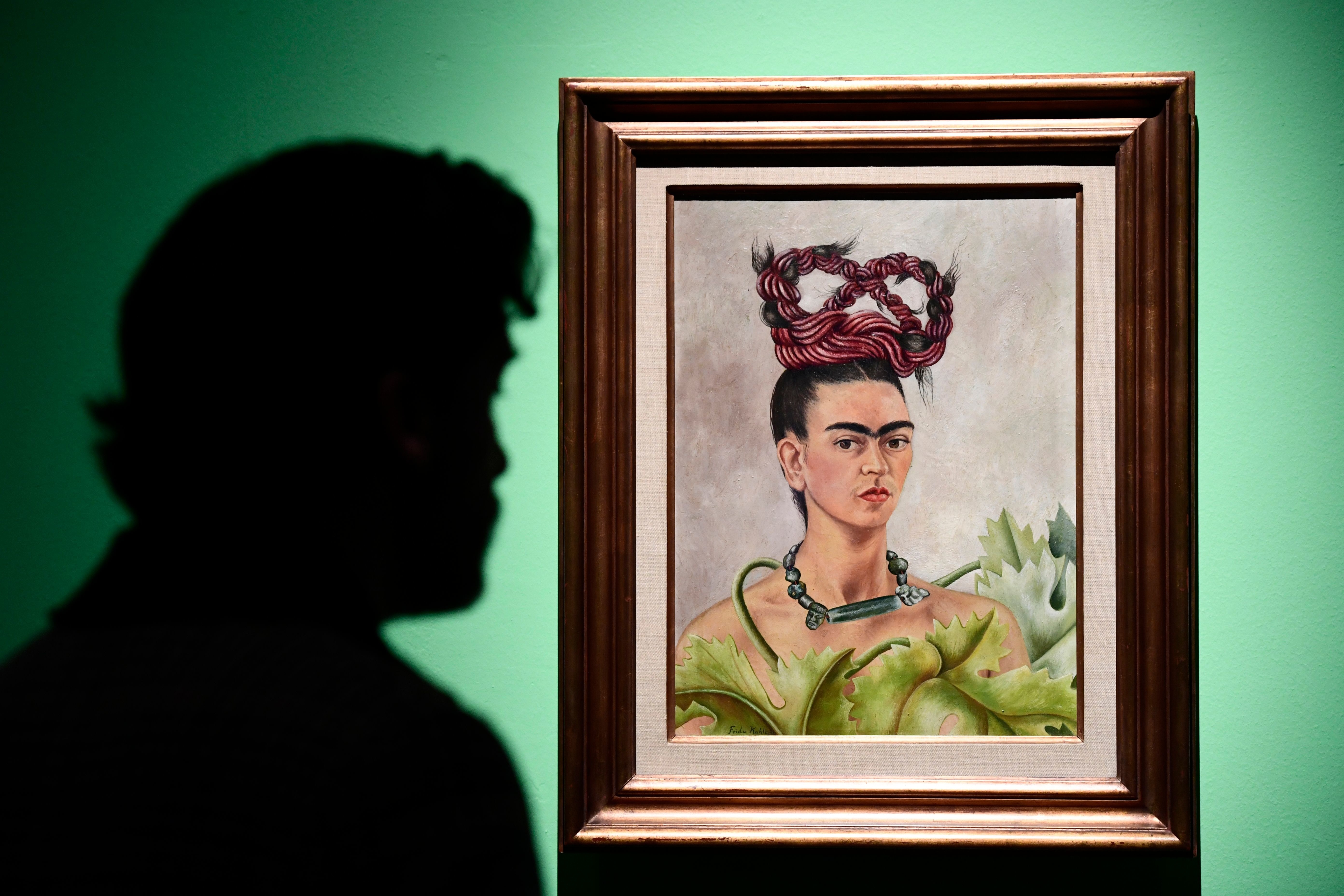The Eyes Have It: Frida Kahlo Retrospective in Germany
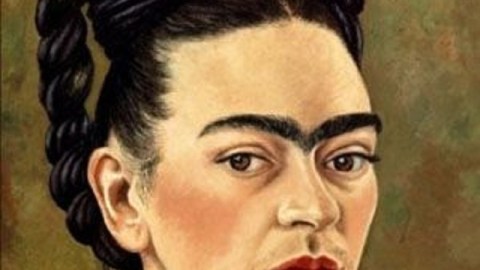
One of the most overlooked aspects of the life of Frida Kahlo is that the artist who exemplified Mexican national identity had a father born in Germany. Thanks to exhibitions in Germany and Austria, Frida returns to her German roots for the first time. The catalogue for those exhibitions, Frida Kahlo: Retrospective, from Prestel, gathers together some of the finest paintings by Frida along with eye-opening essays that touch upon aspects of her art—her writings, the codified love story, her politics—that sometimes get lost in the cult of personality fueling Fridamania. But we always return in the end to the paintings themselves, especially the self-portraits, which return our gaze with eyes that compel us to look deeper. The eyes still have it, more than a half century after Kahlo’s death, and her story and her art still capture our imaginations.
“Frida’s ‘star factor’ tends to keep the potential of her art very much in the shadows,” writes curator Ingried Brugger in the catalogue, “as it would indeed the art of any artist—a phenomenon impressive and disquieting in equal measure.” Brugger’s statement sets the tone for the rest of the project, which paradoxically yearns to pull Kahlo from the shadows of her own spotlight. For example, the self-portraits string together a biographic tale of life-long struggle against pain, physical and emotional, but they do much more than just that. Brugger points out Kahlo’s self-conscious use of Surrealist techniques in her art. “Besides other contemporary stylistic possibilities found in the various international avant-gardes,” Brugger writes, “these strategies consciously took into account not only the potential inherent in giving free play to the unconscious and the oneiric, but likewise that inherent in folklore and the naïve.” The feminist icon remains, but Brugger places next to it an artist fully in control of her art making conscious decisions rather than just painting in reaction to the events of her life. Jeanette Zwingenberger’s essay on “Frida Kahlo’s Human Landscape” answers Brugger’s call for an analysis of Kahlo’s Surrealism by placing Kahlo’s works in the context of Man Ray, Salvador Dali, Brassai, and others.
In “The Celestial Love Story and Encoded Ciphers in the Work of Frida Kahlo,” Helga Prignitz-Poda breaks the Kahlo code of Frida’s self-constructed mythology of adopted symbols. Kahlo loved to play with languages as another form of code to insert into her paintings, often consulting the many foreign language dictionaries she kept at the famous “Blue House.” Prignitz-Poda shows how the mysterious “379” appearing in several diary drawings by Kahlo is a mixture of Cyrillic and Latin alphabets to indicate the letters of the name of one of her lovers, Jose Bartoli. In the diaries, Kahlo would leave gaps or intentionally add misleading words to throw people off the trail of her true intent, much as she did in her paintings. This masterful use of codes and symbols “demonstrates [Kahlo’s] vast erudition and poses great challenges to the viewer,” Prignitz-Poda concludes, leaves “us, the learners,” continually catching up to her.
This study of the linguistic nature of Kahlo’s art continues in Peter von Becker’s essay, “Frida Kahlo, Poet.” “Frida seems to have been, even without formal studies and the systemization they provide, a thoroughly cultured woman,” von Becker asserts. “She was an autodidact” who could read difficult authors and comment on them with “sober, objective enthusiasm.” Frida thus becomes more than just a pretty face, or more than just a suffering servant to feminism, and arises as a intellectual painter-poet whom von Becker places on a par with modernist authors such as Franz Kafka in terms of technique and terrible vision.
Frida’s niece, Cristina Kahlo, provides perhaps the most fascinating section in a selection of photographs of the artist and her circle that she curated, beginning with photos taken by her father Guillermo Kahlo. The black and white photos document the joys and pain, but it is the color photography, mostly by friend and lover Nickolas Muray, that leaps off the pages. The power of Frida’s personality shines through these photos, which were taken with love and show the love the subject had for the world, despite all her physical hardships.
A recent post in Big Think’s “Month of Thinking Dangerously” series asked if we should erase traumatic memories and achieve “eternal sunshine.” Looking at Kahlo’s final painting, Self-Portrait Inside a Sunflower, a haphazard work thanks to the effects of painkillers that seems out of place beside the masterpieces that preceded it (all of which are in this exhibition), we see Frida paint herself as a withering sunflower and wonder if such “eternal sunshine” would have been better. Granted, Kahlo’s traumatic memories arose from physical trauma she could never fully wipe from her mind, but even if she could, would it have come at the cost of her never becoming the thinker and artist she became? It was in those hours of convalescence that Kahlo read and painted and became the artist we now appreciate. To flood those hours with the glare of “eternal sunshine” would have evened out all the contrasts of Kahlo’s life and made her, yes, less tragic, but also less incandescent. A candle in the wind can still throw a lovely light. Frida Kahlo: Retrospective sheds a lovely light on a perhaps too-famous artist we think we know at the peril of hardly knowing at all.
[Many thanks to Prestel for providing me with a review copy of Frida Kahlo: Retrospective, the catalogue to exhibitions at the Martin-Gropius-Bau, Berlin, Germany, until August 9, 2010, and at the Bank Austria Kunstforum, Vienna, Austria, from September 2, through December 5, 2010.]
